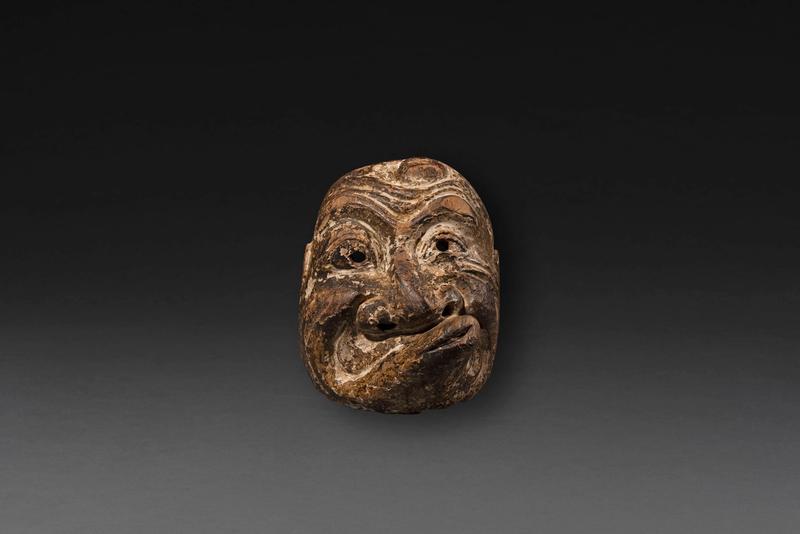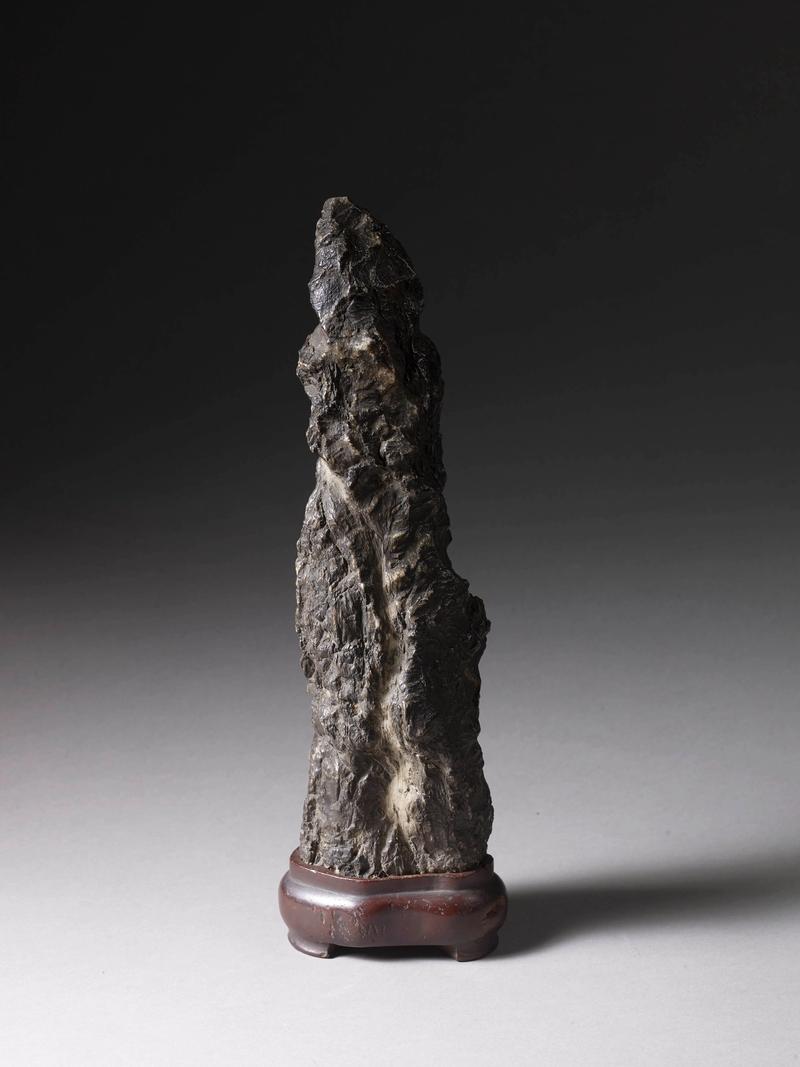A Suiseki (viewing stone), with wood stand.
Japan, 20th century, Taisho period.
Dimensions of the Suiseki only (no stand): H. 12cm x W. 17cm x D. 13.5cm (4¾” x 6¾” x 5¼”).
Suiseki, literally, “water and stones”, are small, naturally shaped stones traditionally admired for their beauty and are closely associated with nature and natural landscapes. They are similar to Chinese scholar’s rocks which were brought to Japan as Imperial gifts and influenced the development of suiseki in Japan. Suiseki have been appreciated and meditated by Japanese people in general but in particular by scholars, nobles and tea masters. They are expressive with special shapes, colour or texture, and suggest scenes from nature such as mountains, waterfalls, lakes, rivers, thatched huts, hills and cliffs. They can also resemble animals or human shapes or simply bear rare and beautiful features. All of which are greatly appreciated by the connoisseur.
Works of Art

A wood Noh mask of Koomote

A bronze flower vessel

A Suiseki (viewing stone)

A kakebotoke

A ceramic te-aburi (hand warmer)

A wood Kyōgen mask of Usobuki

A suiseki (viewing stone) of vertical form with a natural striation resembling a waterfall, with wood stand

A Chinese bronze censer

A Tokoname storage jar

A ceramic vase by Makuzu Kōzan II

A Suiseki (viewing stone)

A Suiseki (viewing stone)

A Chinese Suiseki (viewing stone)

A bronze flower vessel of mimikuchi

A pottery kake hanaire (hanging flower vessel)

A red lacquer Kamakura-bori dai-kogo (incense box)

A Lacquered Shield

A bronze brazier

A bronze hanging flower vessel

A black lacquer bon (tray)

A bronze brazier

An iron nyoi

A Tokoname storage jar











